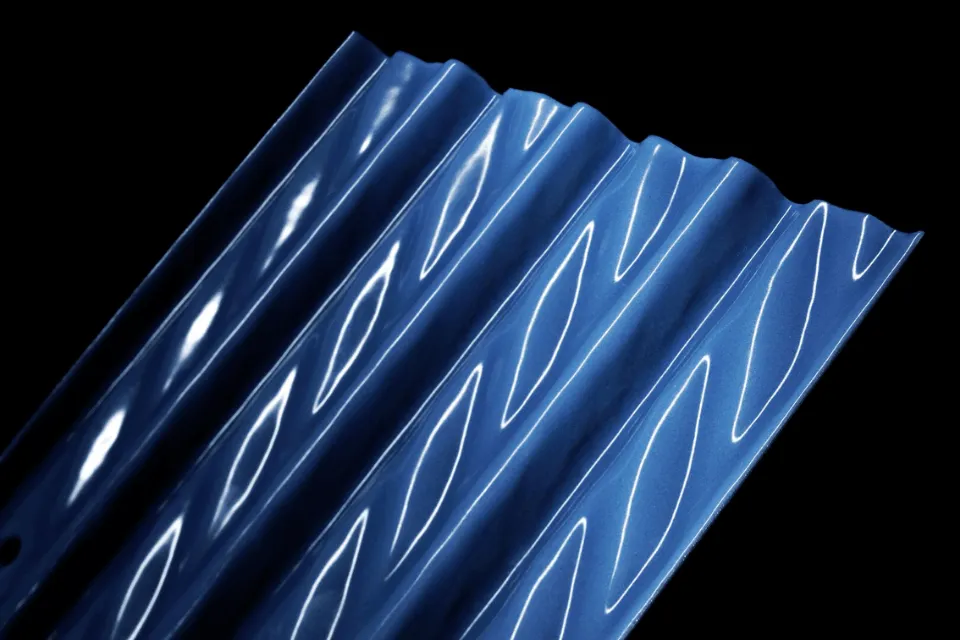
Enameling Steel Basics
Enameling steel is a high-tech process using highly sophisticated materials and state-of-the-art techniques. Enameled products are now used in many different industries, particularly in the cooking industry, architectural and decorative applications.
Benefits:
The benefits of using enameled steel include longevity, aesthetic qualities, hygiene, and respect for the environment.
- Longevity. Enameling steel is resistant to:
- Corrosion, chemicals, detergents, solvents, and acids
- Exposure to the weather, water, and steam
- Fire, heat, cold
- Scratching or abrasion
- Aesthetics:
- Enamel can be colored in an almost unlimited range of colors
- Screen printing presents problems
- A wide range of surface textures can be produced
- Hygiene:
- Prevents the growth of bacteria
- Does not absorb odors
- Safe for contact with food
- Easy to clean
- Respect for the environment:
- Enameled steel is a combination of two clean, recyclable materials
- Enameled steel itself is fully recyclable
Applications:
Enameling steel products are used in a wide variety of applications. The excellent properties of enameling steel, and in particular its hygienic qualities, make it an ideal choice for cooking appliances. Oven cavities, broiler pans, stovetops, and grill covers are specific good examples.
Signage is another application that benefits from enameling steel. It is an ideal solution for indoor and outdoor signposting and communication. The surface will not be damaged by the weather, pollution, or graffiti.
Enameling steel is often used in the architectural industry. It can be used in the interiors of public places, such as stations, airports, and other buildings. Enameling steel can also be used as a cladding for exteriors of buildings, since it is weather and UV resistant, lightweight, and comes in an array of colors.
Enameling Process:
The enameling process produces an everlasting fusion between the steel and the enamel. The process consists of the application and subsequent firing at high temperatures (~1,500 degrees Fahrenheit) of one or more layers of enamel applied by various methods (dipping, spraying, electrostatic) onto the carefully prepared surface of the part. Rather than applying paint, this enamel is a very fine shard of glass that produces a strong, indestructible fusion between the enamel and the steel.
Enamel:
Enamel is a mixture of non-organic vitreous materials (quartz, sands, clays, etc.) and fluxes (borax, soda ash, etc.) colored with various metal oxides. The mixture is fused at a high temperature of approximately 1,300 degrees Celsius, cast, and then cooled rapidly and crushed, thereby forming “enameling frit” which is then ground to produce enamel.
Porcelain Enamel Coatings:
There are two basic types of porcelain-enamel coatings. One is applied as a two-coat system, a ground coat plus a cover coat. The ground coat is applied first and fired to develop a hard, fused coating; then the cover coat is applied over the ground coat and provides the desired color and surface appearance.
The other type of porcelain enameling is called a one coat system, and as the name implies, this is a single-coat, single-fire coating. This method of enameling requires the use of more selectively processed enameling steels.
Enameling Steel
It is critical that the appropriate type of steel is used during enameling. ASTM A424 is the standard for the three types of enameling steel. Steel for enameling must withstand the stress generated during firing and subsequent cooling of the enameled parts without deformation. Moreover, to obtain a good surface finish after enameling, humidity levels during firing should be carefully controlled and the steel should contain hydrogen traps to prevent the formation of surface defects such as fish scale. The defect known as the fish scale is what happens when the enamel pops off the surface of the steel. Fish scale can happen as soon as the enamel is fired, or weeks later. It is critical that enameling steel be used during the enameling process to ensure fish-scale resistance.
There are three types of enameling steels: Type 1, Type 2, and Type 3. Type 1 is an ultra-low carbon enameling steel produced during a process called open coil annealing. It has excellent enamel ability, formability for most applications that require more than one fire during enameling. Type 2 is a low carbon enameling steel that can be used primarily for one-side-only enameling. Type 3 is an ultra-low carbon steel, produced via a special chemistry as opposed to open coil annealing. It has excellent enamel ability, extra deep drawing capabilities, and titanium to prevent warpage on larger parts.
